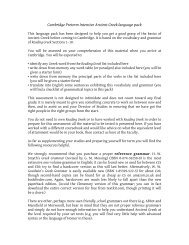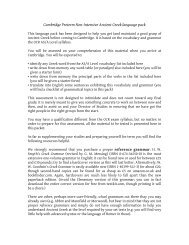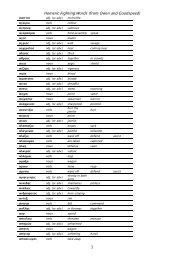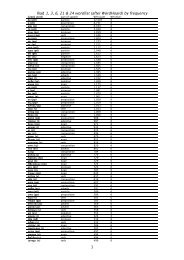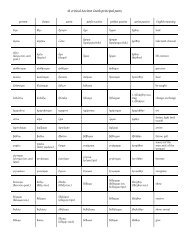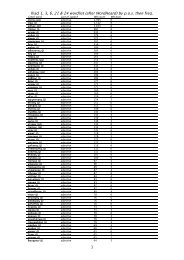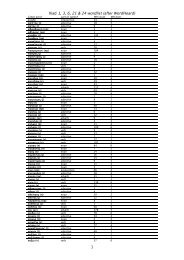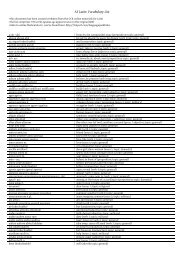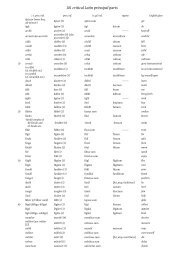Cambridge Preterm Latin language pack
Cambridge Preterm Latin language pack - CW's language page
Cambridge Preterm Latin language pack - CW's language page
Create successful ePaper yourself
Turn your PDF publications into a flip-book with our unique Google optimized e-Paper software.
checklist of grammar topics for <strong>Latin</strong> students<br />
On arriving at <strong>Cambridge</strong> you will be assessed on the following topics. The assessment will fall into four parts (in each part you will be<br />
given some choice):<br />
Section A: Vocabulary: you will be expected to know the vocbulary of the AS Level list (supplied here)<br />
Section B: Accidence: you will be expected to write down from memory any word-table (or paradigm) of any word supplied in the<br />
<strong>pack</strong> (you will not be tested on archaic forms)<br />
Section C: Principal Parts: you will be expected write down from memory the principal parts of the verbs in the list included in<br />
this <strong>pack</strong><br />
Section D: Syntax: you will be expected to translate from <strong>Latin</strong> into English a few sentences that exhibit the points of syntax as<br />
specified below<br />
The assessment will take form as an hour-long online test. Many elements of the test will be generated<br />
randomly by computer, so each test will be unique. Some elements will be very simple and some will be<br />
more challenging. The test will be marked out of 100 points and only you and your Director of Studies will<br />
be given the results. The test is merely designed as a diagnostic tool and will not count towards any final<br />
mark or grade at all.<br />
adjectives and nouns, etc.<br />
• understanding of gender, case, and number in nouns and adjectives<br />
• noun and adjective declension of all five patterns of the words that appear in the AS vocabulary list<br />
• form and use of demonstratives<br />
• form and use of personal, reflexive, and relative pronouns<br />
• form and use of comparatives, including irregulars<br />
• form and use of gerunds and gerundives<br />
verbs<br />
• understanding of the formation and function of person, number, tense, voice and mood in verbs<br />
• understanding of verbal ‘aspect’<br />
• conjugation of regular verbs in all tenses, voices and moods, including participles and infinitives (supplied in <strong>pack</strong>)<br />
• conjugation of the main irregular verbs in in all tenses, voices and moods, including participles and infinitives (supplied in <strong>pack</strong>)<br />
syntax<br />
• understanding of case usage and prepositions (documents supplied in <strong>pack</strong>)<br />
• constructions with comparative expressions<br />
• form and use of participles, including participles used adverbially (= circumstantially or predicatively)<br />
• understanding of verbs that take infinitives , e.g. uolo<br />
• understanding of independent mood usage, such as potential, deliberative and contrafactual subjunctives<br />
• understanding of the sequence of tenses<br />
• understanding of indirect speech, command and question structures<br />
• a general understanding of the variety of subordinate clauses in <strong>Latin</strong> (documents supplied in <strong>pack</strong>)<br />
N.B. The tables and documents are meant to be fairly comprehensive and of use for future reference (e.g. when reading poetic and<br />
archaic texts). Sometimes long marks (macra ¯) and short marks (breuia ˘) have been printed over vowels as an aid in distinguishing<br />
certain elements; in some paradigms such marks are given in the leading word only. Note too that U is employed for V throughout:<br />
this is standard scholarly <strong>Latin</strong> practice today and will be found in the University exams.



